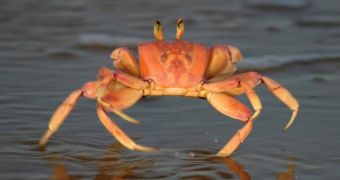Information shared with the general public by the University of North Carolina’s Aquarium Researcher Center says that giant crabs are now taking up residence in Chesapeake Bay, and that carbon pollution is the one to blame for these animals' beginning to thrive in these waters.
The researchers who took the time to investigate this issue explain that, rather than being some peculiar new species, Chesapeake Bay's giant crabs are in fact run-off-the-mill crabs whose body size has considerably increased as a result of their being exposed to carbon pollution-induced ocean acidification.
Just like these crabs, other marine species such as oysters have their growing patterns disturbed by ocean acidification. Still, it appears that, unlike the crabs, the oysters now found in Chesapeake Bay are not getting bigger.
Quite the contrary: they have a difficult time maturing. This means that they are increasingly vulnerable to being eaten by these giant crabs, Inhabitat says.
As the researchers explain, the oysters' newly developed vulnerability to crabs could translate into the local food chain's soon finding itself out of balance.
Since these oysters are also in charge of keeping the Bay's water clean, concerns have also been raised with respect to how a potential decrease in their overall headcount will impact on local wild habitats.
Although several experiments have shown that such giant crabs experience a loss of appetite when exposed to high levels of carbon pollution, specialists fear that, once they have grown accustomed to their new living conditions, they will go back to their typical feeding patterns.
The same source informs us that, while the researchers working with the University of North Carolina’s Aquarium Researcher Center have chosen to mainly focus on the crabs inhabiting Chesapeake Bay, several other studies have shown that this marine species is not the only one growing because of carbon pollution and ocean acidification.
Thus, it appears that species such as lobster and shrimp are also bound to roll out ever-bigger representatives.
It goes without saying that these other ocean acidification-induced changes in marine biodiversity will also negatively affect aquatic ecosystems.

 14 DAY TRIAL //
14 DAY TRIAL //